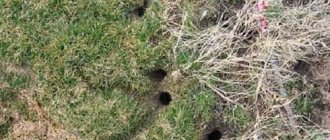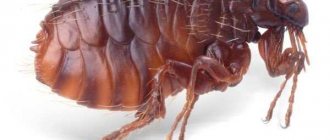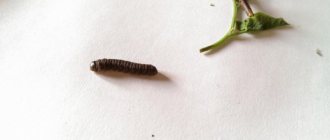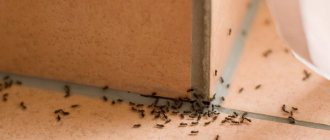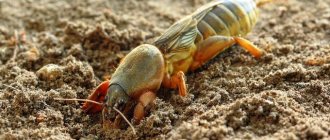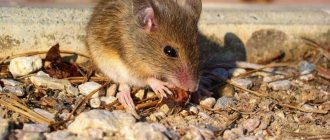With the onset of cold weather, rodents move into private homes. They settle near humans to have access to food and warmth. How to get rid of mice in a private home is a pressing question. After all, rodents are carriers of serious diseases. Therefore, when they appear in the house, you need to take measures to eliminate unpleasant neighbors.
Why do mice appear in a private home?
In late autumn, rodents move closer to people. This is due to low outdoor temperatures and lack of sufficient food. And, if under natural conditions mice breed in accordance with the season, then in warm conditions they breed all year round.
If the presence of rodents is detected in the summer, then it is necessary to identify the cause of their appearance. Mice are attracted to the presence of cluttered places in the house, free access to food, and a sense of security for themselves and their offspring. They can settle underground, in the attic, in the spaces between the walls.
How to get rid of insects
There are quite a lot of parasites inhabiting a wooden house. But the most dangerous to wood are bark beetles and wood borers, as well as termites and ants. All of them, to one degree or another, destroy natural material, turning it into dust over time.
It is imperative to combat insects by taking preventive measures, and, if necessary, solving the problem with drastic methods.
Pre-treatment of wooden elements with antiseptics is carried out during the woodworking process. Then the surfaces are impregnated during the construction of the wooden house. The applied compounds penetrate deeply into the structure of the material, creating a reliable protective layer. The surfaces are additionally painted with varnishes or paints, and over time the coating is renewed.
Antiseptic agents such as BIOREX, PINOTEKS, TIKKURILLA, etc., affect not only adults. Their larvae also disappear. To get rid of insect colonies already during the operation of the house, you will need to find out where the places where they accumulate are located. This will allow you to process contaminated wood more efficiently and efficiently. If significant defects are detected, it is recommended to remove the affected areas and replace them with new ones.
Frame houses have many advantages, but, alas, they all come with a significant drawback: such houses often harbor rodents. These seemingly harmless creatures can cause a lot of harm. For example, rats can chew through the wires that are equipped with equipment located in the house.
Signs of rodents
You can tell that there are mice in the house by the following signs:
- detection of small holes near the baseboards;
- a musty smell appears in the rooms;
- Mouse droppings can be seen in hard-to-reach places;
- squeaking and rustling at night. After some time, the sounds become audible during the daytime.
The presence of rodents in the house is also indicated by the restless behavior of the cat. She rushes from corner to corner, then takes the pose of a hunter and waits for prey.
What are the dangers of a mouse infestation?
So, let's see what difficulties ordinary house mice can create under the floor:
- Constant noise at night.
- Gnawed cables, wires and pipes made from certain materials.
- Insulation materials turned to dust.
- A specific and not very pleasant “mouse” smell in the house.
- Found mouse waste in the morning wherever possible.
- Danger of contracting rodent-borne diseases.
And also such unpleasant phenomena as a dead mouse under the floor, which is not easy to find and pull out.
Now imagine that in a year a female gives birth to up to 7 mice in each of 10 annual litters. Those. in 12 months there will already be 60-70 new rodents in your house! And each mouse matures within just three months, and also begins to reproduce. At the same time, mice are fast animals: they can reach speeds of up to 12 km/h, jump up to 75 cm in length, and up to 40 cm in height. Just don’t let this problem take its course - they will eat the house too.
Folk remedies for mice
If you have pets and children, it is not recommended to use chemical mice repellents in the house. In this case, folk remedies will help. They are safe, provided the residents are not allergic to the plants used.
Ledum
Due to the strong aroma that wild rosemary emit, it becomes a good method in the fight against rodents. They cannot stand its smell and leave the inhabited territory. There are four ways to use the plant:
- Ledum must be planted in flower pots and placed in rooms. Pots with the plant can also be placed in the garden to drive mice away from the area.
- Using an aroma lamp with wild rosemary essential oil.
- Laying dry grass in the corners of the room and near rodent holes. The grass needs to be changed so that the smell does not disappear.
- Fumigation of rooms with wild rosemary. This is a non-standard method that is used extremely rarely.
Note!
Ledum is a very allergenic plant. Therefore, its use should be avoided if there are young children or adults prone to allergies in the house.
Peppermint
It has a pleasant aroma that many people like. But mice are afraid of this grass. You can, as in the case of wild rosemary, spread dry grass in the corners and area. Essential oil, in the absence of an aroma lamp, can be dropped onto cotton pads or cotton balls and placed in the corners of the rooms.
Another method of use involves using a spray bottle. It is necessary to prepare a strong infusion of mint, strain it and spray it around the room. Mint is an effective remedy in the fight against rodents.
Cilantro (coriander)
Using spices also has good results. Both powdered product and coriander beans are suitable. You can also use fresh cilantro sprigs.
Spices are scattered on kitchen cabinets, in the corners of rooms, in the pantry. The pungent smell repels mice and forces them to leave the house.
Blackroot
Not only mice, but also rats are afraid of this grass. Among the ways to use this plant are the following:
- laying dry grass in the corners;
- spraying cracks and corners with fresh decoction or squeezed plant juice;
- placing crushed roots in rodent burrows and crevices;
- use of thorny seeds. They need to be scattered in rodent habitats. The thorns will stick to the skin of the pests.
When using blackroot, you need to remember safety. Its roots and seeds are poisonous to humans.
Elder
This plant will help you get rid of mice in a private home forever. Elderberry root contains a powerful poison - hydrocyanic acid. To get rid of rats and mice, it is necessary to chop the rhizomes and scatter them in the cellar, on the site. When working with roots, take precautions. Be sure to use protective gloves.
Elderberry decoction and fresh twigs also repel rodents. The broth can be sprayed and the twigs can be placed in mouse holes.
Note!
The hydrocyanic acid contained in the roots is poisonous to humans. To avoid poisoning, do not use the plant in a home with small children and pets.
Sagebrush
Wormwood has a tart odor that is unpleasant to rodents. Dried grass is laid out around the house, on the site. You can also plant the plant in the area, protecting it from mice.
To protect the crop from rodents, you can also put dried wormwood on top of it. This ensures the safety of the crop from pests.
Tansy
Tansy helps cope not only with rodent infestations, but also with insects. Its smell cannot be tolerated by mice, rats, ants, mosquitoes and flies.
Both dry and fresh grass are suitable for eliminating pests. Cut the stems with inflorescences and make small bouquets from them. Tie the stems with strong threads. Hang bunches of tansy in the house, in the attic, out of reach of small children.
High-tech repellents
An ultrasonic or electromagnetic repellent is a device that generates high-frequency sound waves that repel rodents. Repellers are installed in premises occupied by pests, connected to the electrical network and left for 15-20 days.
Replent for mice and rats Source carcam.ru
Ultrasonic rodent repeller Source carcam.ru
The peculiarity of the device is that the rodents do not die, but are moved to another place, since they cannot tolerate prolonged ultrasonic exposure.
- Ultrasonic repellers show excellent results. The operating principle is based on ultrasound radiation, which negatively affects the nervous system of rodents.
- Electromagnetic emitters, generators of alien radiation - it is possible that such devices cope with insects, but they do not help against rodents.
- Combined devices are devices designed to protect premises from pests of various origins. They can operate in the mode of emitting ultrasound or electromagnetic waves. Although they belong to the universal type, they have weak results. Therefore, if you have set yourself the task of driving mice out of your home, purchase only a separate model of an ultrasonic repeller.
Pay attention to a number of factors that can improve or, conversely, reduce the effectiveness of its use. They are as follows:
- Thick walls can reflect the signal into the room, thereby increasing propagation within a single room. The disadvantage is the small coverage area, limited by the size of the room.
- The maximum effect is achieved when repellers are located in open spaces and rooms. In busy passages, rodents will move behind the obstacle, and ultrasound will be scattered between things. Thus, the result will be weak.
- The best place to place the repellent is in the center of the room. The device should emit waves throughout the room, and not in the direction of one point.
- Do not leave food within the reach of mice. If there is an abundance of food, no repeller will help get rid of rodents.
Poison - the best drugs
The poison has a good effect and copes well with rodents. Manufacturers produce it in the form of powder, special liquid, poisonous briquette, paste. The following brands have proven themselves well:
- "Rat Death No. 1." The poisonous mass has a pleasant aroma that rodents like. It releases fumes that are harmful to rats and have a depressing effect on the respiratory system of the pests. The maximum effect is achieved a week after treatment;
- "Goliath". The drug helps to poison a large number of rodents. Its effect does not begin immediately, but after a week. During this time, all pests eat the bait, which does not cause them any concern. Soon all the animals die;
- "Ratid 1". Helps poison rodents, used in all types of buildings;
- "Storm". The main advantage of the poison is the lack of decomposition of dead individuals. In this regard, there is no specific smell;
- "Nutcracker". The green briquette acts as bait. The rodent absorbs a poisonous mass that poisons the circulatory and respiratory systems. After a short period of time, suffocation develops, which forces the rodent to crawl out into open areas. A dead specimen is easy to locate and dispose of;
- "Tsunami". The tablet preparation is pink. Safe for pets and people. It has a cumulative effect, having a detrimental effect on the cardiac, nervous and circulatory systems of the rodent.
A poisoned mouse should not be handled with bare hands. You can throw out the pest using a dustpan, or wearing household gloves on your hands.
Damage to people and homes
The damage that rodents cause in a person’s home is so significant that it is difficult to even imagine. These animals can chew wires, which can cause a fire, and damage soft toys and upholstered furniture, as well as other items. In addition, mice are carriers of dangerous diseases such as salmonella, plague, typhus, and Weil's disease. Infection can occur through food on which a mouse has run and left traces of its activity. Rodents are distinguished by the fact that they leave their excrement everywhere, infected with various viruses and bacteria. Even waste vapors pose a danger. Children and the elderly who have weakened immune systems may be the first to suffer.
Despite their small size, the damage these pests cause is quite significant. Even in ancient Rome, mice were caught with various mousetraps. Pests are also distinguished by the fact that they quickly adapt to new conditions. They survive in conditions of extreme cold, hunger and even high humidity. They build warm nests for themselves and store food for future use, and having sharp eyesight helps them avoid danger in time. In search of food they move over considerable distances.
Modern repellers
If the use of chemicals is impossible for some reason, modern rodent repellers will come to the rescue. Mice and rats are afraid of them. They are safe for people and pets, but have a detrimental effect on unwanted neighbors. Ultrasonic waves penetrate walls and partitions, catching pests in the most inaccessible places.
High-frequency ultrasound causes discomfort and a sense of danger in rodents, forcing them to leave their habitats. For small rooms, it is enough to purchase compact devices such as “Grad” or “Pest Reject”. The Electrokot device is intended for large areas. Its radius of action is up to 200 sq.m.
On a note!
Rodents adapt well to any conditions. Therefore, it is not recommended to use the same methods of dealing with them for a long time. It is advisable to alternate methods in order to permanently discourage pests from settling on your territory.
Looking for holes
First of all, it would not hurt to identify the source of trouble and eliminate it. To understand the location of harmful animals, there is a proven method: at night, sprinkle flour on the floor and, based on the tracks left by the animals, determine where they crawl out from, where they roam and where they return. Based on this data, they carry out extermination measures.
The second option also needs to be completed. Carefully check all the walls in the apartment or house to detect holes through which rodents enter the room. These entrances and exits can be either of construction origin (unsealed cracks, holes under baseboards or on the surface left after repairs) or biological, that is, made by household pests.
Furry hunter
Cats and male cats originally served as domestic hunters. They were excellent at catching and repelling mice. Nowadays, the hunting instinct of many cats has not only become dulled, but disappeared. This is due to the fact that owners prefer to buy not simple, outbred animals, but cats of noble blood. Not only do they not repel rodents, but they themselves are afraid of them.
For a private home, it is best to take a simple yard cat. He will catch mice with pleasure and excitement and protect the territory entrusted to him from the invasion of rodents.
Frame house protection
In order to prevent rodents from settling in a new building, you should carefully consider how to protect the house from mice during construction. The following techniques can be used as preventive measures against pests:
- It is recommended to use ecowool as floor insulation on the first floor. It will protect the house from the appearance of fungus, mold, and various insects. The material is 80% recycled cellulose, and 20% is a mixture of boric acid and borax. The composition is an excellent antiseptic for wood and will protect the mansion from mice and other pests.
- Treat building materials with borax or lime solution.
- you can use ash, tobacco dust, wormwood or peppermint, the smell of which rodents cannot stand, and also fill the interior partitions with slag.
- If the soil characteristics allow, replace the pile or strip foundation with a reinforced concrete slab, which mice will not be able to chew through and will not penetrate into the frame house. The use of monolithic structures will provide reliable protection for your home.
- Using a special fine-mesh metal mesh that will protect the building from rodents.
All these techniques will protect the structure from mouse attack.
Application of metal mesh
In addition, during the construction phase or after the construction of the structure, a metal mesh is used to ensure its safety. It has a number of positive properties:
- ease of use;
- maximum protection against various rodents;
- environmental safety;
- accessibility to consumers;
- ability to maintain its characteristics over a wide temperature range.
To ensure effective protection, it is necessary to choose the right material. The thickness of the wire from which the mesh is made must be at least 2 mm, and the parameters of the cells no more than 5x5 mm, otherwise mice will gnaw through it or simply crawl into the existing holes.
The mouse net is laid along the subfloor, in this case the insulation is spread directly on it. Or they cover the base of the house with it, since mice can be found under the floor inside the space that is formed as a result of building a house on stilts. The height of the protective coating laid under the plinth casing must be at least a meter. Before insulating and finishing the house, it is advisable to cover all corners of the building with galvanized mesh.
A built frame house can be protected from mice. To do this, you should bury a mesh fence along the foundation to a depth of at least 0.8 m, and if there are rodent holes, then the laying of the protective structure should be deeper than mouse passages.
The effectiveness of this method of protecting a frame house from mice is evidenced by numerous reviews from the owners of such cottages posted on the website.
Floor
Screw stilt houses, like other frame structures, require effective protection of the floor, which is the most likely place for mice to enter the house. When arranging it, you should use both metal mesh and other means. Expanded clay will be an effective method of protecting flooring:
- when laying the subfloor, it is spread onto the ground in a layer of at least 0.3 m;
- the material is covered with a polyethylene film, on top of which OSB-3 boards are placed in two rows;
- then the final layer of expanded clay is laid, crowning the structure of the “black” floor, completely protected from mice.
The reliability of such an “expanded clay lock” is enhanced by impregnation of boric acid and synthetic wax, which is applied to the slabs.
Insulation materials
Appropriate insulation can act as protection against mice and rats. Quite often, to insulate a frame house from the inside, owners use cheap thermal insulation material - polystyrene foam. Mice can gnaw it and freely settle in the room. Experts strongly recommend not saving and using an expensive insulation option that effectively protects against rodents - ecowool. Ecological material will not only repel rodents, but will also create an antiseptic environment that prevents the appearance of mold and other negative phenomena. This insulation has good heat and sound insulation characteristics.
Mousetraps
Mousetraps are long-known, effective mice repellents. Depending on the number of rodents, you need to purchase one or more devices. Place them in pest habitats and check daily for the presence of bait and mice.
Lures with a pronounced odor are more effective. Therefore, it is advisable to fry pieces of sausage, bread or lard in a frying pan and then place them in a mousetrap. The strong aroma will attract rodents.
Physical methods
There are many types of mousetraps, traps and traps for mice. The difference lies in the mechanism of action and the principle of catching rodents. Compact devices are easily installed in mouse habitats, where they often pass in search of food. The most popular types of physical mouse traps are those presented below.
Classic mousetraps
The advantage of classic mousetraps is the possibility of repeated use immediately after the caught animal is removed. To do this, install a new bait and cock the return spring. You don’t have to do anything else; replacement of parts and consumables is not provided here.
Trap
This refers to a metal cage with a raised door. The bait lies in the far corner and presses the thread that holds the locking mechanism. The principle of operation of the device is that the animal enters the cage, heading towards the bait, releases the thread, thereby closing the door, the mouse remains inside.
Another type of mouse trap is a small box with an entrance that only works in one direction. Having caught the aroma of bait, the rodent gets inside, but is no longer able to get out.
Electrical accessories
An electric mouse trap can be powered by AA batteries or from an outlet. The device is built on the principle of placing bait inside an energized zone. The mouse sees a tasty morsel and moves towards it, stepping on the wires and receiving an electric shock, the value of which is sufficient to cause its death.
Electric traps are quite popular and differ in size and the presence of additional options, for example, it can be a chamber for storing corpses, sound or light indicators of capture.
Important! The devices operate on electricity. When the batteries are disconnected or low, they turn off.
Glue trap
An equally effective way to control rodents. Presented in the form of a regular plate treated with a sticky non-toxic composition. The mice become glued to the base, unable to free themselves.
Important! When using such devices, you need to be prepared to peel the caught mouse off the base while it is still alive. As an alternative, many people throw away the stickers along with the caught animal.
Homemade baits
Homemade baits will help you catch a mouse without a mousetrap:
- The bottom of a transparent container should be spread with chocolate paste. Turn the trap upside down and place one side on the edge of the coin. When the mouse sneaks under the trap, wanting to eat the treat, the balance will be upset. The container will cover the pest and will not allow it to get out;
- using a jar or aquarium. It is necessary to place edible bait at the bottom of the trap. Attach a homemade ladder from a stack of books or magazines to a jar or aquarium. Once trapped, the pest will not be able to escape, since glass is a slippery material.
Caught rodents should not be handled with bare hands. It is necessary to throw a thick cloth over them and take them away from the living space.
Preventive measures - how to protect your home from small rodents
There are preventive measures to prevent the appearance of mice in a private home. Here are some ways:
- All cracks must be sealed. Pay special attention to the floor, walls, ceiling;
- at night, it is necessary to close the doors tightly and curtain the windows so as not to attract the attention of rodents;
- do not leave basement doors open;
- sewer and ventilation openings must be covered with metal mesh;
- Pet cages must be kept clean;
- It is advisable to store food supplies in the refrigerator or in tightly closed containers;
- Do not leave dirty dishes in the sink or on the table;
- crumbs should not be allowed on the surface of the table or floor;
- Any leftover food after feeding your pet should be removed without leaving it in the bowl.
These recommendations will help avoid the appearance of mice and other pests in a private home.
Summarizing
Fighting mice is a difficult and nerve-wracking business. It is much better to protect your home from their entry by choosing the right building materials and using chicken wire to protect the foundation and vents.
FORUMHOUSE has an excellent collection of ways to protect facades, ceilings and foundations of houses from mice. Find out how to protect your garden and vegetable garden from mice. Read our articles about humane methods of controlling moles and other garden pests: mole crickets, pests that attack wood. Watch our video on how to save a tree that has been chewed by mice.
Subscribe to our Telegram channel Exclusive posts every week
Reviews
Anna
There was no way I could breed mice in a private house. I got two cats, but after a month there were no traces of mice. I was afraid that the cats would fight for territory. But they get along well with each other.
Vladislav
Now there are modern repellers. They help quickly get rid of rodents. Tested from my own experience.
Svetlana
I prefer to poison mice. I use Storm. Simple and very effective.
Rodent Information
As a rule, house mice, which are synanthropic creatures, settle in a person’s home. They differ in that they live exclusively next to a person in his home. They constantly follow a person and can be seen on ships and even on airplanes. Therefore, house mice quickly master new human homes, entering them through ventilation systems, through cracks in the floor or walls.
When a mouse appears in a house, it is not immediately noticed, since mice prefer to be nocturnal, and during the day they rest in secluded places. When they begin to actively move around the house at night, you can hear rustling and squeaking noises, and that’s when the owners begin to notice the presence of rodents in the house. Field mice breed exclusively seasonally, while mice that live in a house breed year-round. After 2 months of life, they can already reproduce. At the same time, they are able to reproduce offspring literally every month. It’s not difficult to imagine what the mouse population will be like in six months: their numbers are increasing exponentially.
The female herself arranges the nest, dragging various pieces of paper, wool, shavings, etc. to a certain place. During this period, she becomes aggressive and can even bite a person. Since mice are not large in size, they can penetrate through fairly small cracks. If mice are in danger, they are capable of attacking animals that are much larger than them.
In human homes, mice settle mainly in storage areas. With the arrival of summer, they leave human habitation and move to fields, where they build nests at a depth of about 40 cm. With the arrival of autumn, they again begin to attack private houses.
